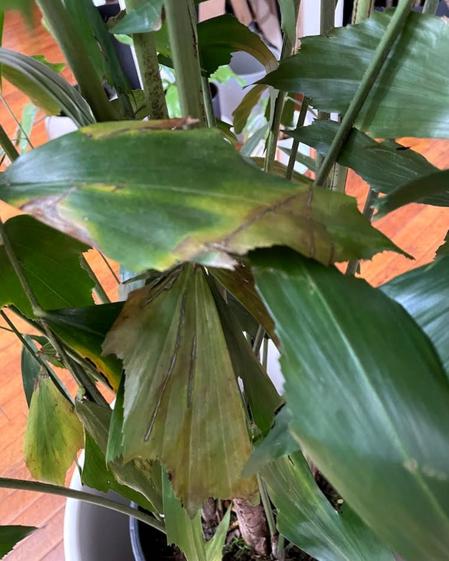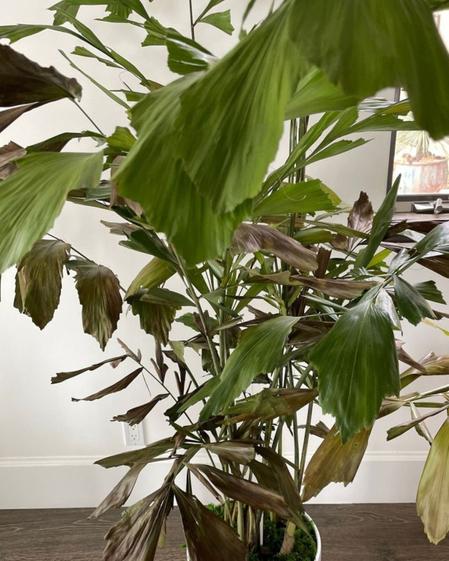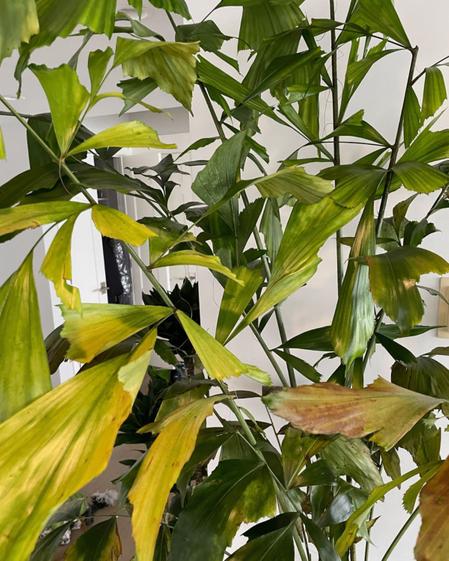Fishtail Palm Care Guide

The Fishtail Palm (Caryota mitis) is a unique tropical houseplant known for its lush, feathered leaves that resemble a fish’s tail—hence the name. With its tall, elegant form and layered, textured foliage, this palm makes a dramatic statement in any room. Native to Southeast Asia, the Fishtail Palm thrives in bright, indirect light and brings a sense of vibrant greenery to well-lit indoor spaces. It’s an excellent choice for those seeking a low-maintenance indoor tree that adds height, movement, and visual interest to the home or office.
Simple Care Instructions for the Fishtail Palm
Light Requirements
The Fishtail Palm thrives in bright indirect light and can also adapt to a few hours of direct sunlight each day. Placing your Fishtail Palm next to a window with filtered light is ideal. This tropical plant does not tolerate low-light conditions, so be sure to keep it in a well-lit room to maintain its lush, textured foliage.
Watering Needs
Keep the soil slightly moist, watering when the top 1–2 inches of soil feels dry to the touch. While the Fishtail Palm enjoys consistent moisture, it’s surprisingly drought tolerant once established and can handle the occasional missed watering. Be careful not to overwater—these palms don’t like soggy roots.
Need help knowing when to water? A moisture meter takes the guesswork out of plant care. Shop our favorite minimalist moisture meter here.
Humidity and Temperature
As a tropical plant, the Fishtail Palm prefers moderate to high humidity and consistent indoor temperatures. Dry air can lead to browning tips, so consider using a humidifier or misting the leaves regularly, especially in winter. Avoid placing the plant near drafts or air conditioning vents.
Soil and Fertilizing
Fishtail Palms thrive in well-draining, nutrient-rich soil. Use a high-quality indoor potting mix that includes ingredients like perlite, orchid bark, or sand to improve aeration and drainage. These fast-growing palms benefit from regular feeding—use a balanced liquid fertilizer twice a month during the spring and summer growing season. In fall and winter, pause fertilizing as the plant’s growth naturally slows.
Common Problems and Troubleshooting Tips
Before we cover some common issues with the Fishtail Palm, it should be noted that this plant is incredibly sensitive to change. It is not uncommon to see the plant decline during the first 6-12 weeks in its new home. That said, the Fishtail Palm can make a swift recovery if given time and patience. If you believe your plant is suffering from something other than adjusting to a new home, continue reading.
Brown Leaf Tips with Yellow Halo
Symptoms: Leaf tips appear brown and dry, with a faint yellow ring around the edge.
Cause: Low humidity or a dry indoor environment, often due to central heating or air conditioning.
Solution: Boost humidity by misting your Fishtail Palm twice weekly, or place a humidifier nearby. Keeping the plant away from air vents also helps prevent leaf dehydration.
Leaves Yellowing in Quick Succession
Symptoms: Multiple leaves turning yellow over a short period.
Cause: Overwatering or poor drainage.
Solution: Only water your Fishtail Palm when the top 1–2 inches of soil feel dry. If you suspect overwatering, remove the plant (in its plastic grow pot) from its decorative planter and check for pooled water. If excess moisture is present, discard it and allow the plant to dry out before watering again.
Leaves Yellow and Dry
Symptoms: Dry, brittle leaves with yellow discoloration.
Cause: Too much direct sun or underwatering.
Solution: Water consistently when the topsoil is dry. Move your Fishtail Palm a few feet away from windows to protect it from harsh, direct sunlight that can scorch the leaves.

A potential watering or humidity issue.

Fishtail Palms are sensitive to change and may exhibit stress when moved.

Possible light issue.
Seasonal Care Tips
Fishtail Palms are highly sensitive to environmental changes, so it’s important to keep conditions as consistent as possible throughout the year. Sudden shifts in temperature, humidity, or light can cause stress—often showing up as yellowing leaves, browning tips, or leaf drop.
Be especially cautious when moving your Fishtail Palm to a new spot or adjusting its watering or light routine. If transitioning it closer to a brighter window or placing it outdoors in warmer months, do so gradually to avoid shock. Similarly, during winter, protect the plant from cold drafts and sudden drops in humidity caused by indoor heating.
Consistency is key for this tropical beauty. With a stable environment and attentive care, your Fishtail Palm will reward you with tall growth and richly textured foliage.


